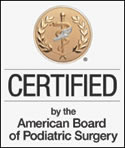If you are in your 30s or 40s, there is a good chance that there was at least one person in your family that insisted on curing everything with hand-me-down home remedies. Maybe it was a grandmother, auntie, uncle or grandpa. Either way, you’ve probably figured out by now that some medical conditions are best treated by professionals. Such is the case with ingrown toenails. They more often than not require the services of a podiatrist well versed in ingrown toenail removal.
We often recommend ingrown toenail removal to ensure that any infection and pain associated from the condition do not spread. That’s because all licensed podiatrists know that if the infection does succeed in spreading to other areas of the body, it could prove to be life altering or life threatening for the patient. Therefore, as soon as you notice the signs of an ingrown toenail, we recommend that you call and make an appointment.
In most instances, we will treat the infection first. Otherwise, the removal process could make it much easier for the bacteria associated with the infection to enter the bloodstream and spread rather rapidly. Once the infection is taken care of, the podiatrist may proceed with full or partial nail and tissue removal.
This is often done with the aid of a localized anesthetic and generally takes place in the office. However, in severe cases where the infection has caused the surrounding tissue to become necrotic, the podiatrist may suggest that general anesthesia be used. In those scenarios, the ingrown toenail removal is typically completed in a hospital setting.
The methods used to actually separate the offending nail and tissue from the patient’s otherwise healthy foot are quite diverse. They include, but are not limited to, the use of lasers and surgical knives. Recovery times will vary based on the surgical method used, the extent of the damage involved and the patient’s comorbidities. The patient’s willingness and ability to follow the post-surgical care recommendations will obviously play a role in the recovery process too.
- Posted on December 10, 2014









